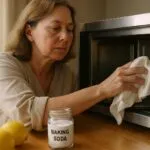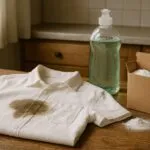Everyone wants a home that feels fresh and clean. But many people find themselves stuck in a routine of Bad Cleaning Habits without knowing it.
Housekeeping expert Mary Marlowe Leverette notes that cutting corners during house cleaning often causes dirt buildup and appliance damage later on. This guide identifies 10 common Bad Cleaning Habits, explains why they cause problems, and shows how easy changes can create big improvements at home.
Readers may even discover they’re guilty of habit number three.
Key Takeaways
- Dirty cleaning tools spread germs and dirt instead of removing them; for instance, unwashed kitchen sponges can harbor millions of bacteria within days, threatening family health.
- Using too much cleaner or mixing the wrong chemicals causes sticky residue buildup, dangerous fumes, and unpleasant odors; always follow product labels carefully to protect your home environment.
- Leaving damp towels piled up promotes mold growth in 24 to 48 hours, leading to allergens inside your home and fabric damage like weakened fibers and faded colors over time.
- Cleaning tasks done out of order like dusting after vacuuming or mopping floors before sweeping makes chores harder by forcing you to repeat steps due to dust settling again quickly.
- Wearing outdoor shoes indoors significantly increases household grime by bringing harmful germs such as E. coli from sidewalks onto clean floors; this makes daily housekeeping longer and more difficult.
Tip: Use a cleaning checklist to review important housekeeping habits. Follow product directions carefully, avoid excess cleaning products, and replace worn-out tools to improve organization, orderliness, and sanitation.
Using Dirty Cleaning Tools
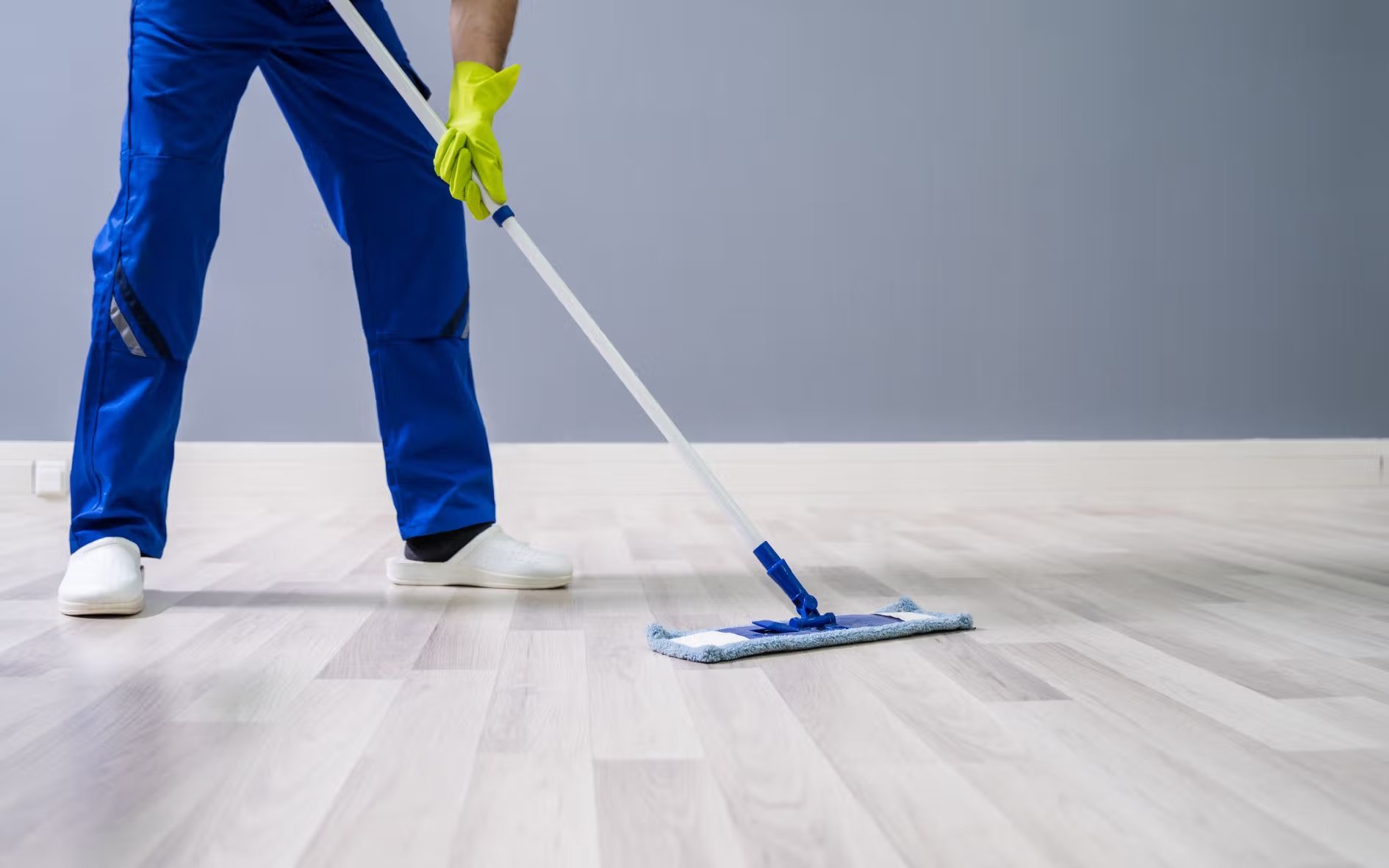
Cleaning your house with dirty tools is like washing dishes in muddy water it defeats the purpose. Worst of all, you’re spreading germs instead of removing them!
Tip: Watch the video link above to see how eliminating cleaning mistakes by properly maintaining tools can improve sanitation.
Not washing sponges and cloths regularly
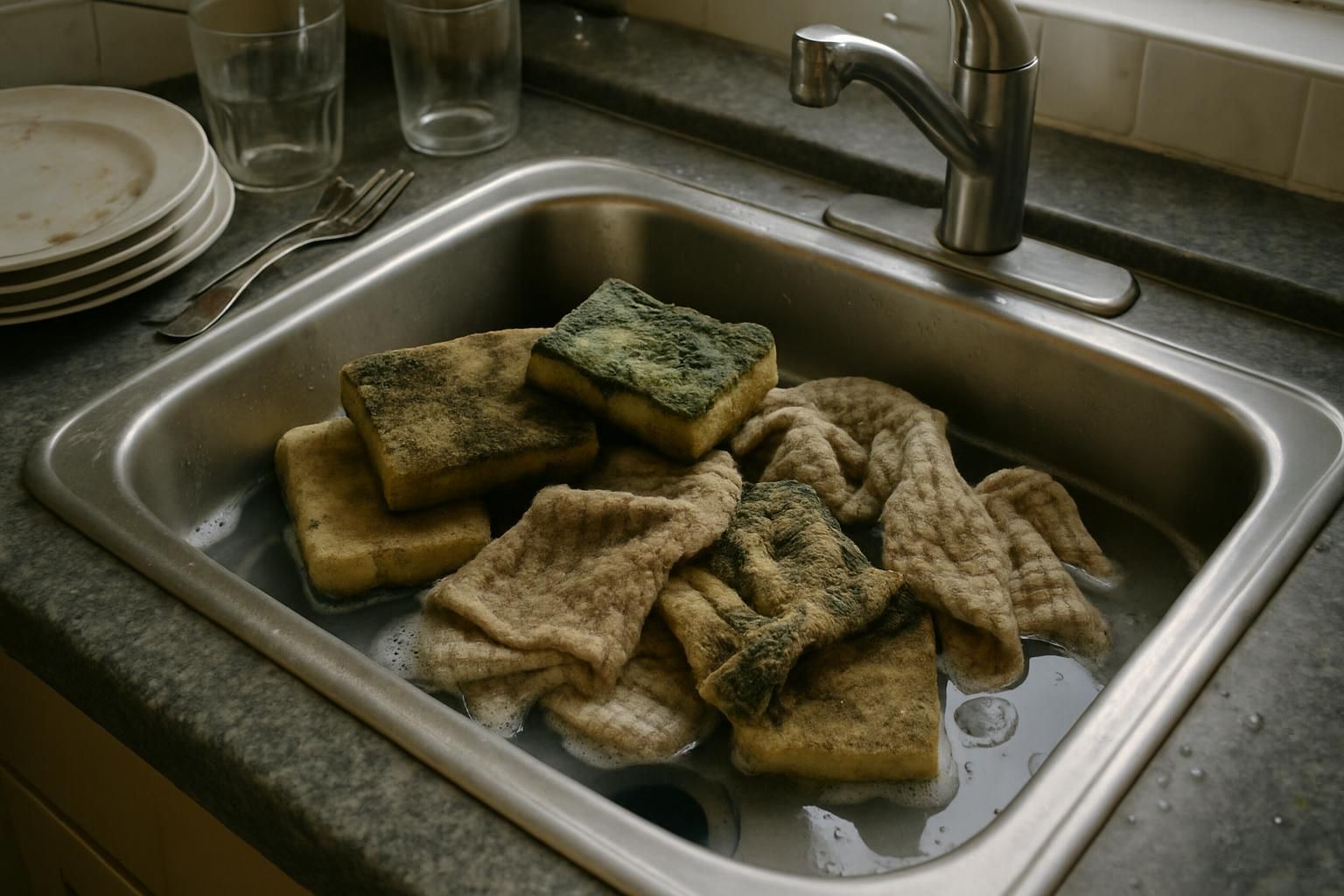
Dirty cleaning utensils like sponges and cloths become breeding grounds for bacteria in just days. A kitchen sponge can carry millions of germs per square inch after only a few uses, spreading more dirt than it removes.
Regularly washing these items prevents harmful bacteria from multiplying and keeps families healthy. Routinely sanitizing sponges and cloths with hot water or disinfectant kills germs effectively each time they are used.
Neglecting to clean these unwashed cleaning tools risks the health of everyone at home by allowing bacteria-infested surfaces to thrive unchecked.
Tip: Create a routine schedule to sanitize sponges and cloths. Use proper product directions to overcome neglecting cleaning tools and boost overall tidiness, eliminating bad cleaning habits.
Forgetting to clean vacuum filters
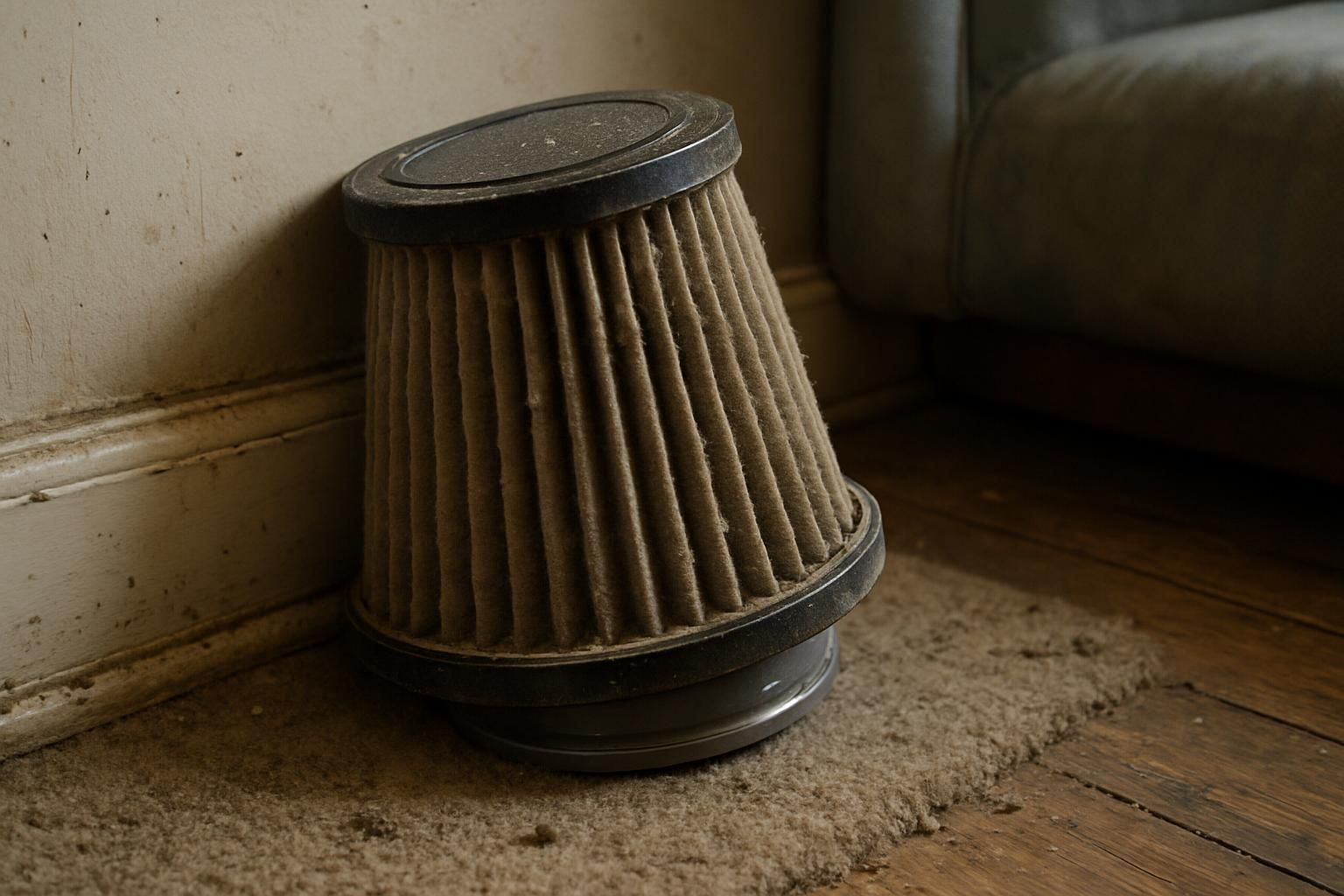
Forgetting to clean vacuum filters lowers suction power and pollutes indoor air quality. A dirty vacuum filter makes cleaning ineffective, forcing house owners to redo tasks that should take minutes.
Regular filter cleaning improves the performance, lifespan, and efficiency of effective cleaning tools like vacuums. Over time, clogged filters cause machines to overwork and wear out quickly, raising repair or replacement costs.
Households that practice proper post cleaning maintenance keep their equipment running smoothly year after year. Good care also means fewer allergens spread around homes where kids play each day.
Avoid this common mistake by consistently maintaining these essential tools.
Tip: Follow a monthly checklist for vacuum filter cleaning. This step helps in overcoming bad cleaning habits and improves equipment performance.
Ignoring Product Instructions
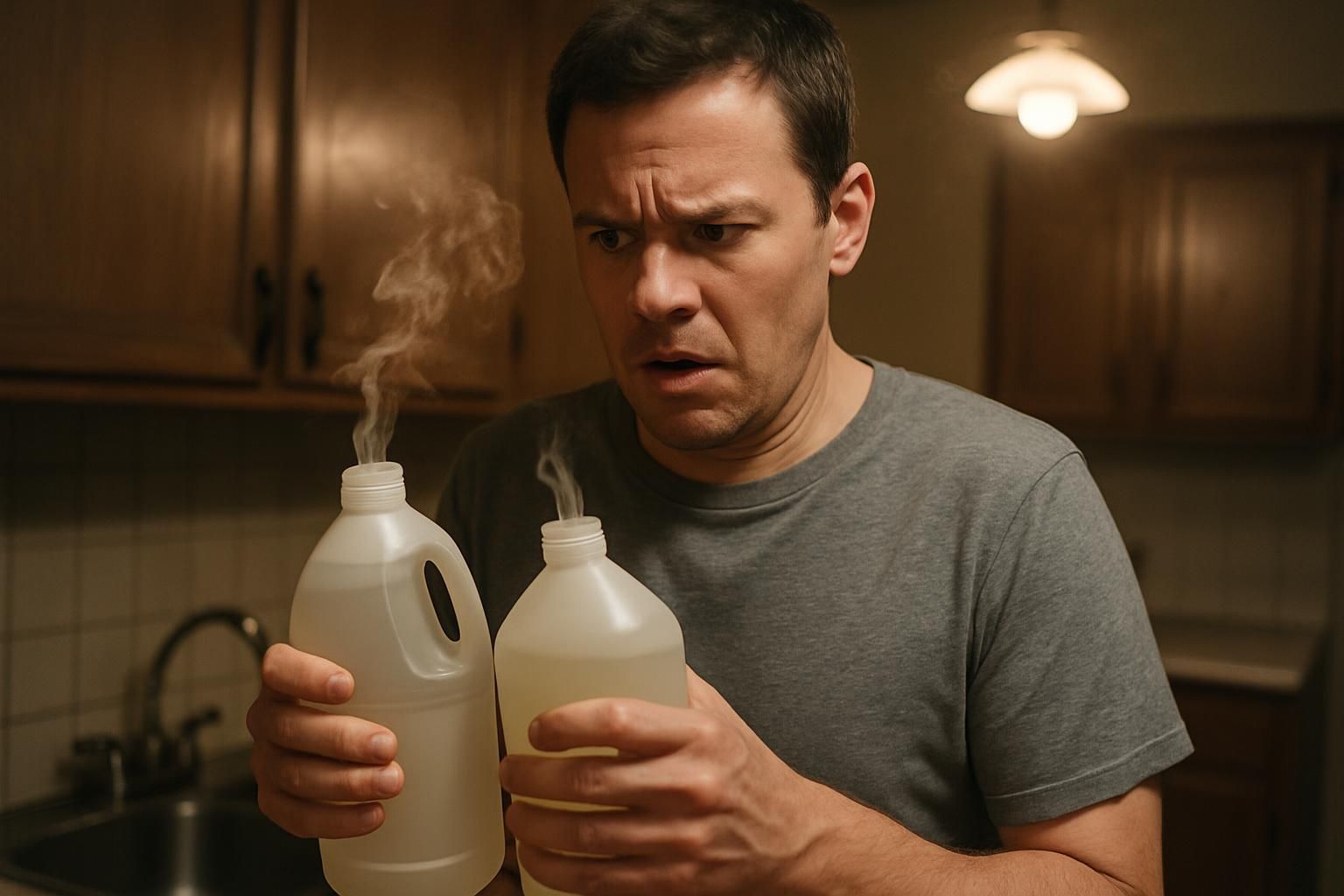
Cleaning products aren’t soda you can’t eyeball the amount and hope it works out. Mixing cleaners without reading labels sets you up for trouble sometimes explosive trouble.
Tip: Carefully follow product directions when using cleaning supplies. Measure each ingredient to avoid using too much cleaning product or harsh cleaners that can damage surfaces.
Using too much cleaning product
Excessive use of household cleaners often backfires, leaving surfaces sticky and streaky. Overusing cleaning supplies creates residue buildup that attracts dust and grime faster than normal.
Many manufacturers warn about this on product labels; disregarding these guidelines increases indoor air pollution with dangerous fumes. Small amounts used correctly prove more effective than heavy-handed spraying, which just raises cleaning costs without improving results.
Mixing incompatible cleaners
Another big mistake people often make is mixing incompatible cleaners. Combining certain household cleaners can create dangerous chemical reactions. For example, bleach should never be mixed with vinegar or other cleaning products because it releases hazardous substances and toxic fumes into the air.
Bleach works as an effective disinfectant but does not remove dirt; it also produces harmful gases that threaten a family’s health.
House owners and parents should always follow product safety instructions to prevent harm from these mixtures. Accidentally mixing chemicals like ammonia and bleach creates poisonous gases irritating eyes, lungs, and skin. This is a real bad cleaning habit.
Staying alert about label directions helps families avoid unnecessary household hazards caused by common product misuse.
Tip: Use a precise amount of cleaning product as directed. This habit helps in overcoming bad cleaning habits while ensuring a safe environment.
Skipping Deep Cleaning Tasks
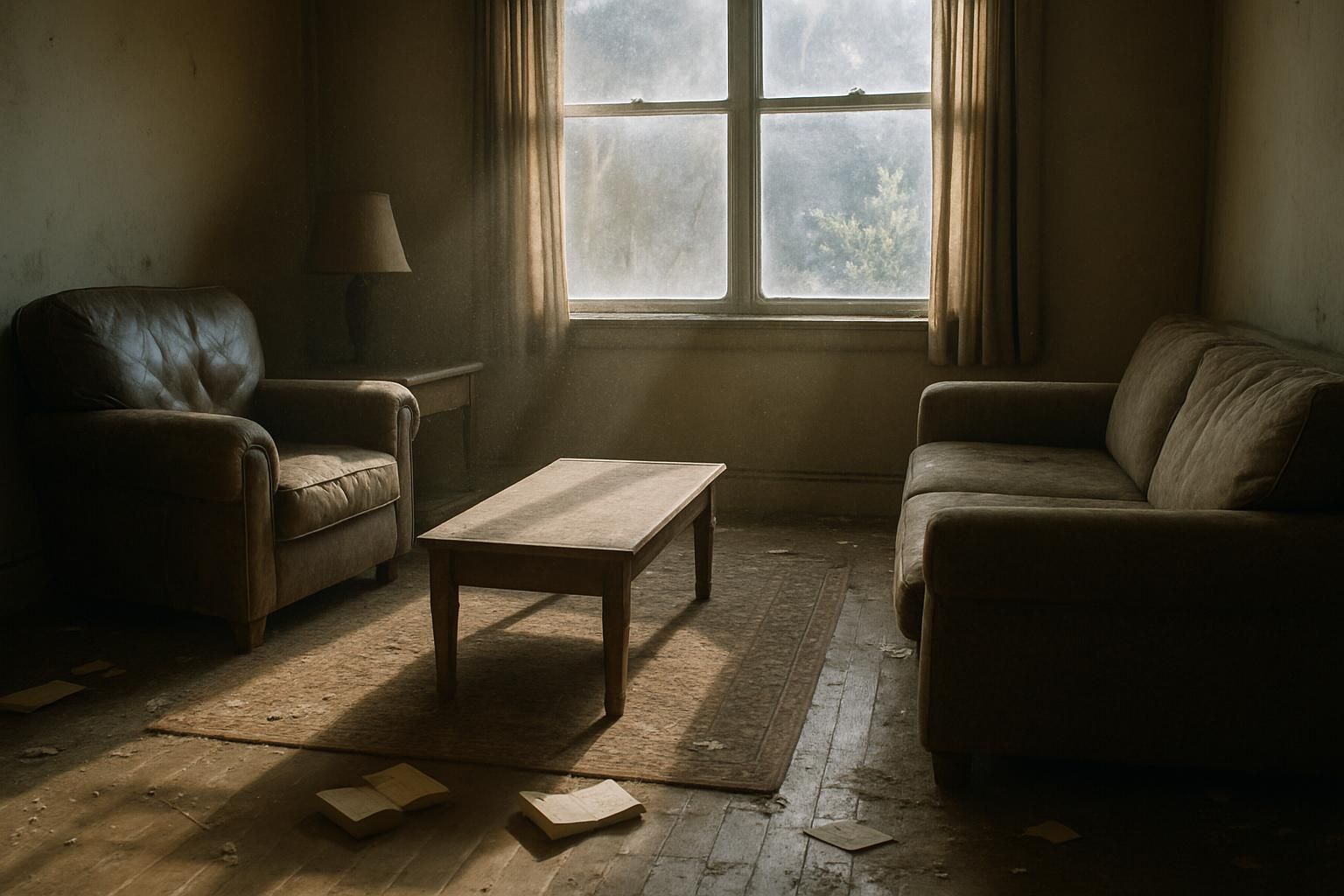
Many homeowners put off those tougher cleaning tasks, thinking they won’t matter much. Yet dust and grime quietly pile up, creating bigger headaches later on.
Tip: Set a fixed schedule for deep cleaning tasks. Review challenging areas and tackle them methodically to improve overall tidiness and sanitation.
Neglecting hard-to-reach areas
Dust piles up quickly behind furniture and under appliances. Neglecting these hard-to-reach areas allows bacteria, allergens, and mold to grow unnoticed. Deep cleaning tasks like dusting ceiling fans, sanitizing under the fridge, or disinfecting corners may seem tedious but drastically improve household hygiene.
Allergens such as pet dander and pollen hide in overlooked spaces that routine cleaning often misses.
Regular thorough cleaning reduces indoor allergen levels by nearly 90 percent and keeps breathing comfortable for adults and kids alike. Mold prevention includes wiping moisture-prone spots beneath sinks or behind washing machines at least once monthly.
Cleaning behind furniture also reveals items like lost toys or missing socks little victories every parent can appreciate!
Checklist: Include behind-furniture, under-appliance, and corner cleaning in your routine to overcome neglecting cleaning tools and maintain proper orderliness.
Forgetting to clean behind appliances
Many homeowners neglect to deep clean behind appliances. Overlooking these hidden spaces lets dust, dirt, and food crumbs pile up over time. Such buildup invites bacteria growth and mold formation two big causes of allergies in homes today.
Cleaning thoroughly around refrigerators, ovens, washers, and dryers keeps harmful allergens away from family members. Skipping thorough cleaning routines behind large household items can lead to unwanted pests like ants or cockroaches sneaking inside the home.
Moving heavy appliances quarterly for a quick yet effective cleanup protects families from health hazards while creating cleaner living conditions for everyone at home.
Tip: Dedicate time each quarter to move appliances and check hidden areas. This practice supports proper organization and reduces bad cleaning habits.
Leaving Wet Towels and Clothes Piled Up

Wet towels tossed in a pile can quickly turn your room into a moldy mess. Leaving damp clothes lying around might give your laundry basket nightmares too.
Promoting mold and mildew growth
Leaving damp towels or wet laundry piled up promotes mold and mildew growth. Mold thrives on moisture buildup and can grow quickly within 24 to 48 hours, causing bacteria control problems at home.
Air drying towels and shower curtains after use prevents musty smells and reduces allergy risks for family members. Families who practice proper laundry care protect their homes from household cleanliness issues linked with mold exposure.
Regular deep cleaning also helps remove hidden allergens, bacteria, and tiny mold spores that sneak into forgotten corners of the house.
Tip: Dry towels and clothes immediately to overcome cleaning mistakes related to moisture. This step aids in maintaining sanitation and fabric care.
Damaging fabric over time
Wet towels and clothes stacked in piles cause fabric damage over time. Damp conditions slowly weaken fibers, creating faded colors and worn-out textures. Whether bath towels, kitchen towels or kids’ favorite shirts lay around damp for too long, mildew soon emerges to ruin them.
Proper drying of clothing and linens prevents stubborn smells and costly replacements. Even shower curtains need good airflow since moisture buildup quickly invites mold growth along hems and edges if left unchecked.
Simple habits like keeping things dry lengthen each item’s lifespan, save money on household budgets, and eliminate mold problems at the source.
Tip: Organize your laundry routine by promptly drying items. This improves fabric care and helps in getting rid of cleaning mistakes linked to moisture.
Allowing Paper Clutter to Accumulate

Paper clutter piles up fast and quickly takes over valuable space. Taming this mess can save sanity and countertops alike.
Ignoring mail and documents
Ignoring mail and documents leads to allowing paper clutter to accumulate. Unmanaged correspondence quickly becomes a messy pile near the front door or kitchen counter. Designating a specific spot near the home’s entryway for incoming mail helps control this issue.
House owners should sort, shred, and file important papers at least once each week. Parents can manage children’s artwork by taking digital photos, cutting down on household clutter while keeping memories safe.
Handling papers promptly prevents neglected tasks and reduces stress caused by piles of paperwork left undone.
Tip: Sort, shred, and file papers regularly to overcome organization challenges. This improves tidiness and reduces cleaning mistakes caused by clutter.
Letting magazines and newspapers pile up
Stacks of print media quickly add clutter to any home. Magazines and newspapers occupy valuable space on tables, counters, and desks. Piles grow fast if no one sorts or manages periodicals regularly.
To tackle paper clutter effectively, homeowners should set aside time each week to sort mail and documents. Filing essential paperwork neatly helps reduce household messes over time.
Taking digital photos of children’s artwork can free up even more storage space while preserving precious memories. Donating gently used magazines to local schools or retirement homes offers reading material for others and clears out extra piles at home.
Any leftover publications become suitable candidates for recycling bins instead of taking up valuable living areas around the house.
Tip: Establish a paper management routine to overcome clutter. Regularly discard or file old documents to boost orderliness.
Cleaning in the Wrong Order
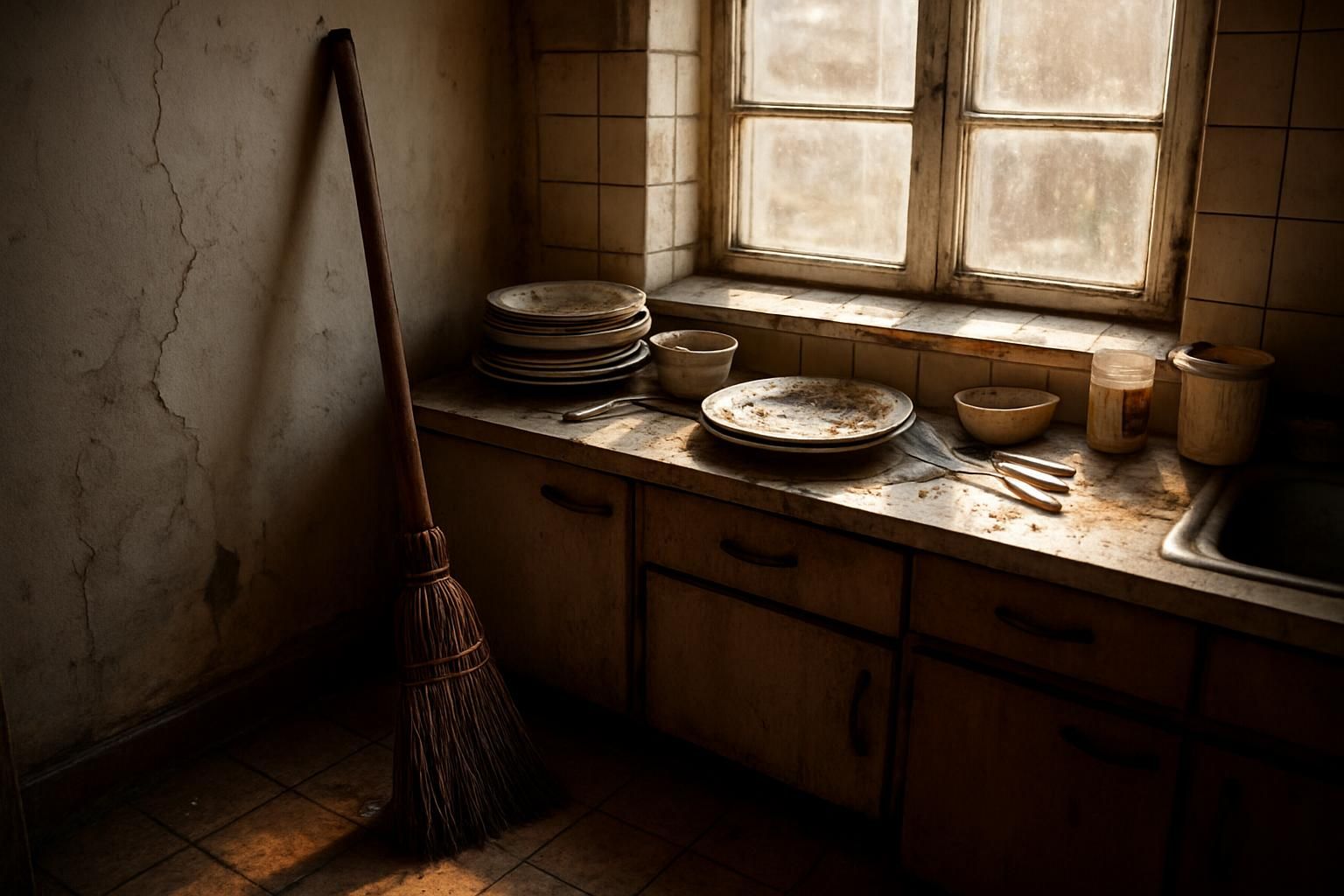
Imagine sweeping your floors spotless, only to see dust settle again right after. Cleaning done in the wrong order wastes energy and sets people up for extra work.
Dusting after vacuuming
Dusting after vacuuming sends the cleaning process backward. Dust particles quickly settle back onto surfaces that were already cleaned, making household chores harder. The correct home cleaning tip involves starting from top to bottom: declutter first, dust high shelves and furniture, wipe counters next, and finish by vacuuming or mopping floors last.
Inverting this essential cleaning sequence means repeating surface dusting tasks more often than necessary. Correctly performing housekeeping routines makes tackling other common cleaning order mistakes like “mopping before sweeping” much simpler.
Tip: Follow the proper cleaning order by dusting before vacuuming. This method helps eliminate cleaning mistakes and ensures overall orderliness.
Mopping before sweeping
Cleaning floors by mopping first can trap grit under the mop. This cleaning sequence pushes dirt around and might scratch delicate surfaces like wood or tile. Sweeping or vacuuming beforehand clears away loose grime, protecting floor finishes from damage.
Tip: Always sweep or vacuum before mopping to overcome cleaning mistakes. This practice improves sanitation and preserves floor surfaces.
Leaving Dirty Dishes in the Sink
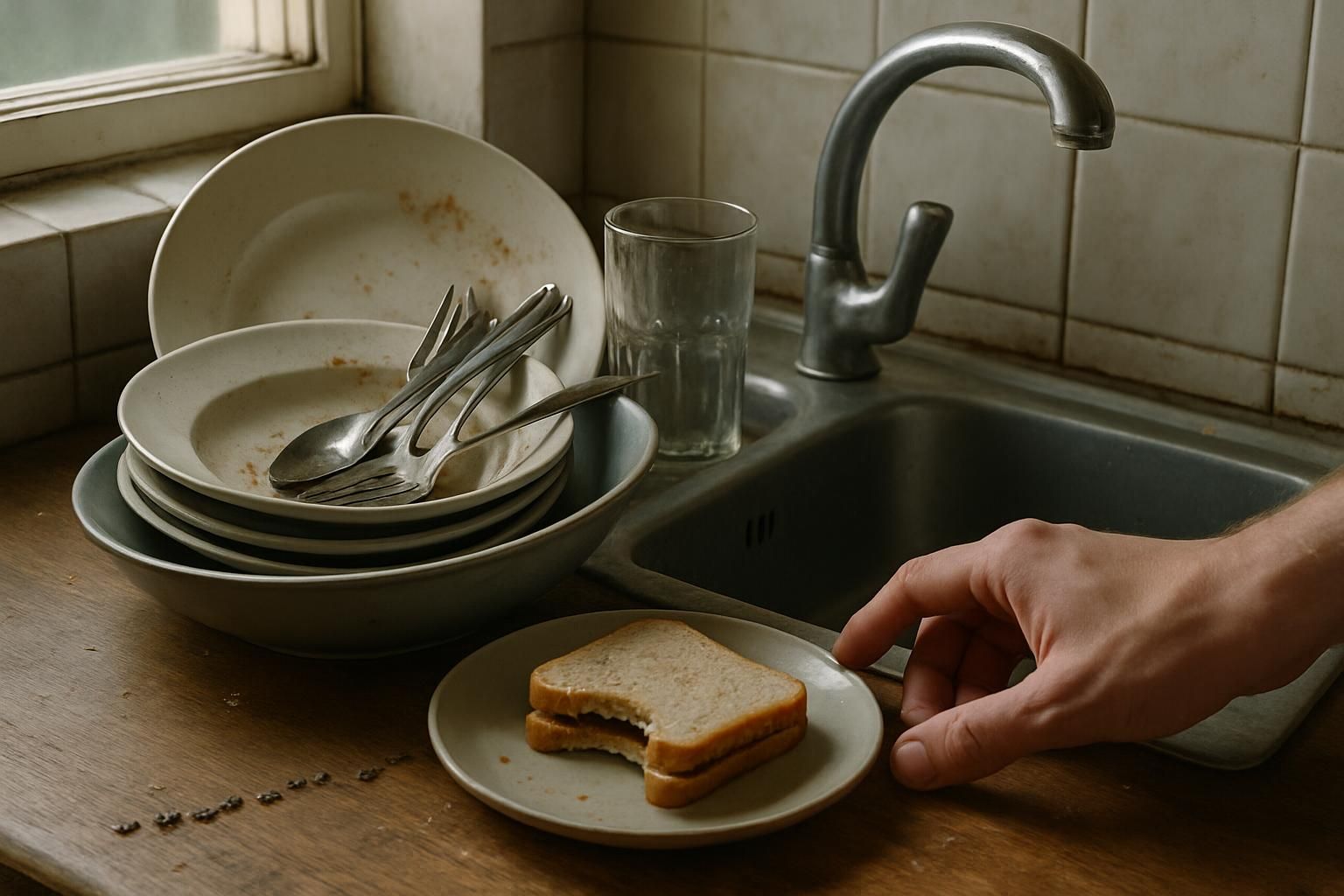
Dirty dishes lounging in the sink quickly turn a tidy kitchen into bug heaven. Leaving plates overnight is an open invitation for nasty smells and hungry pests.
Attracting pests
Dirty dishes left in the sink invite pests into a clean kitchen. Food scraps and moisture create perfect conditions for bacteria growth. Ants, cockroaches, and even rodents hunt out these tiny leftovers as easy meals.
Placing plates immediately into the dishwasher or washing them right away helps keep pests away and maintains hygiene. Small daily tasks like quick dish management stop clutter from piling up and prevent larger pest control issues later on.
Tip: Manage dirty dishes promptly to overcome cleaning mistakes. This improves tidiness and reduces the risk of attracting pests.
Causing unpleasant odors
Leaving dishes in the sink breeds foul smells. Leftover food quickly turns into a breeding ground for bacteria growth and unpleasant scents that ruin kitchen hygiene. Unwashed dishes also attract ants, roaches, and even rodents looking for scraps of food.
Promptly rinsing plates or putting them right into the dishwasher protects homeowners from pest infestation and dirty kitchen odors. Disposing uneaten leftovers immediately cuts down on strong kitchen odors caused by spoiling foods and prevents germs from multiplying rapidly. Avoid those bad cleaning habits.
Tip: Rinse and clean dishes right after use to overcome cleaning mistakes. This habit upholds household orderliness and improves sanitation.
Wearing Outside Shoes Indoors
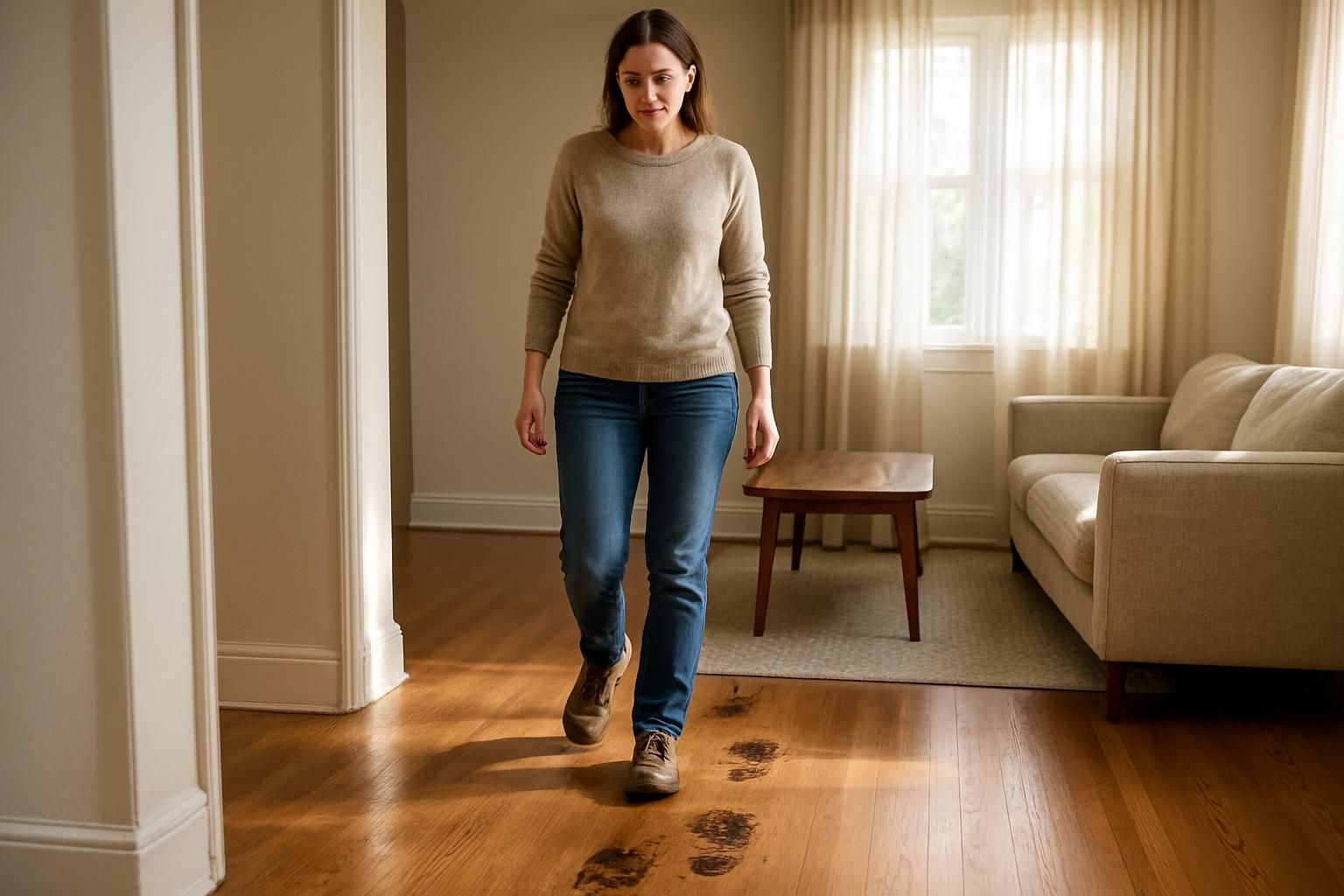
Shoes worn outdoors carry unwanted guests right onto clean floors. Allowing shoes indoors means more work later and fewer cozy barefoot moments now.
Tracking in dirt and bacteria
Every outside trip invites contaminants to hitch a ride indoors. Wearing outdoor footwear inside can make floors grimy faster and spread bacteria around rooms. Since germs like E. coli live on sidewalks and lawns, shoes often pick them up along with dirt and dust.
Removing shoes before entering cuts down vacuuming time and prevents tracking harmful bacteria onto household surfaces. Frequent sweeping also helps prevent grit from scratching floors, making mopping quicker later on.
Tip: Remove shoes at the door to overcome cleaning mistakes. This simple action promotes better sanitation and orderliness.
Increasing cleaning workload
Outside shoes worn indoors bring dirt and debris from streets directly into the living area. Shoes pick up microorganisms, chemicals, pollen, and even pet waste particles while stepping outside in yards or on sidewalks.
This extra grime demands more frequent vacuuming, mopping floors repeatedly, and sanitizing surfaces to maintain household hygiene standards. Removing footwear at entrances saves valuable time spent tidying up each day by significantly reducing indoor messes.
Tip: Enforce a no-shoes rule inside to overcome cleaning mistakes. This step reduces indoor pollutants and improves overall tidiness.
Not Maintaining Cleaning Equipment
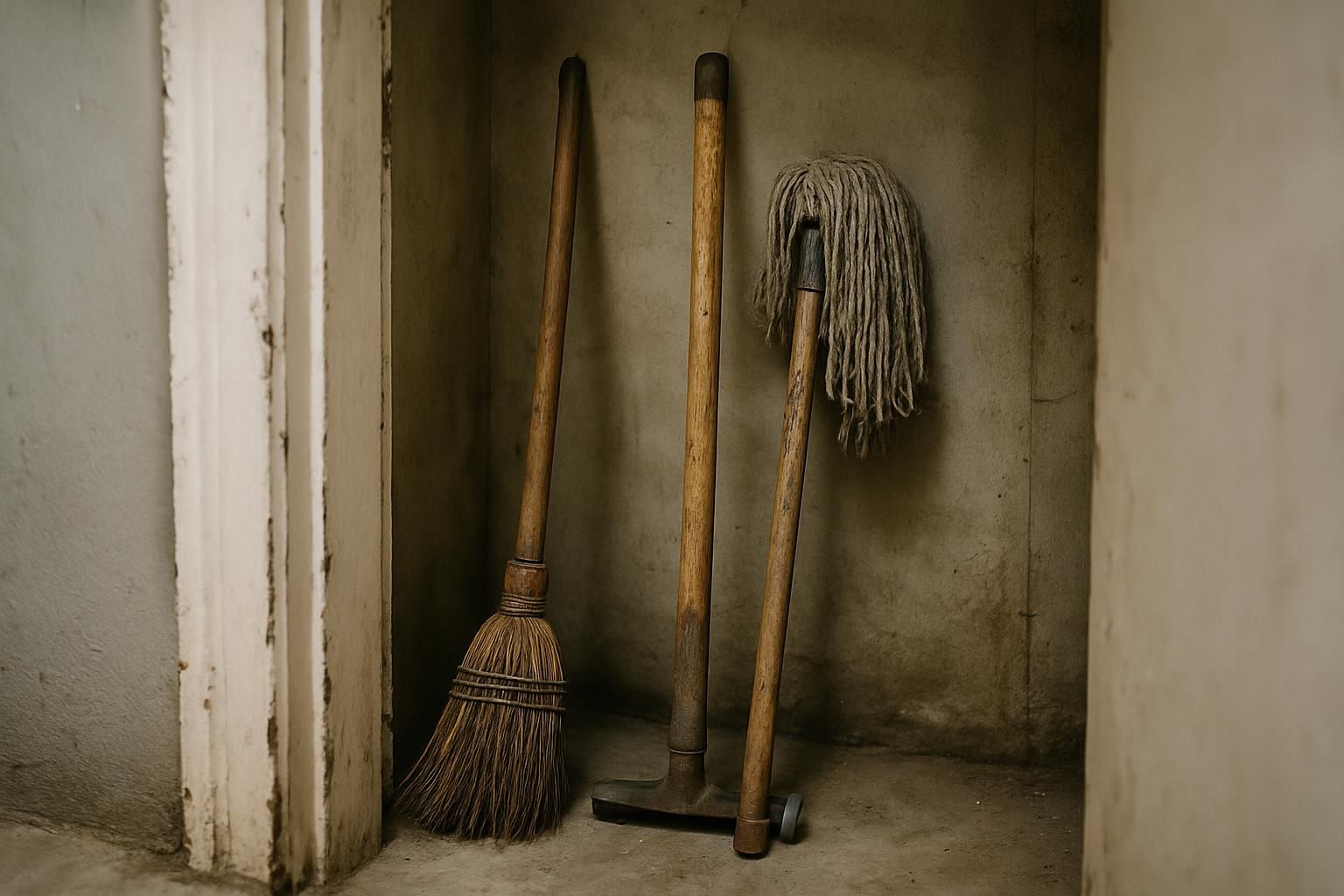
Cleaning gets harder when tools aren’t in good shape. Dull, worn-out equipment can slow down anyone trying to keep the home tidy.
Storing cleaning tools improperly
Proper storage of cleaning supplies makes a huge difference in their effectiveness and longevity. Many homeowners throw brooms, mops, or sponges in closets without care, leading to odors and bacteria buildup.
Keeping items close to the area they are used saves time and simplifies cleaning equipment maintenance. For example, store kitchen cleaners under the sink instead of across the house.
Choose opaque containers for certain products rather than clear glass ones; this helps protect chemicals from sunlight damage.
Using simple labeled bins or hooks creates helpful storage solutions for cleaning tools. Essential items like wood polish, stainless steel spray, and multipurpose cleaners should each have a designated spot that’s easy to reach but safely out of kids’ grasp.
Proper cleaning tool storage also extends the life of brushes and cloths by preventing unnecessary wear from moisture or dirt exposure. Organized areas encourage cleanliness habits because family members can quickly locate what they need with minimal fuss or confusion.
Tip: Store cleaning supplies near where they are used. Good organization helps overcome cleaning mistakes and improves overall orderliness.
Forgetting to replace worn-out items
House owners often push cleaning tools beyond their limits, unaware of the negative impact on effectiveness. Dirty mops scatter grime instead of soaking it up; worn-out sponges leave behind as much dirt as they remove.
Vacuums with frayed belts and clogged brushes become ineffective dust magnets. Regular replacement ensures consistent results during each cleaning session. Maintaining fresh supplies boosts cleanliness levels at home and cuts down on wasted effort from dull or damaged equipment.
Tip: Regularly inspect and replace worn-out cleaning supplies to overcome bad cleaning habits. This helps in maintaining efficiency and proper sanitation.
Conclusion
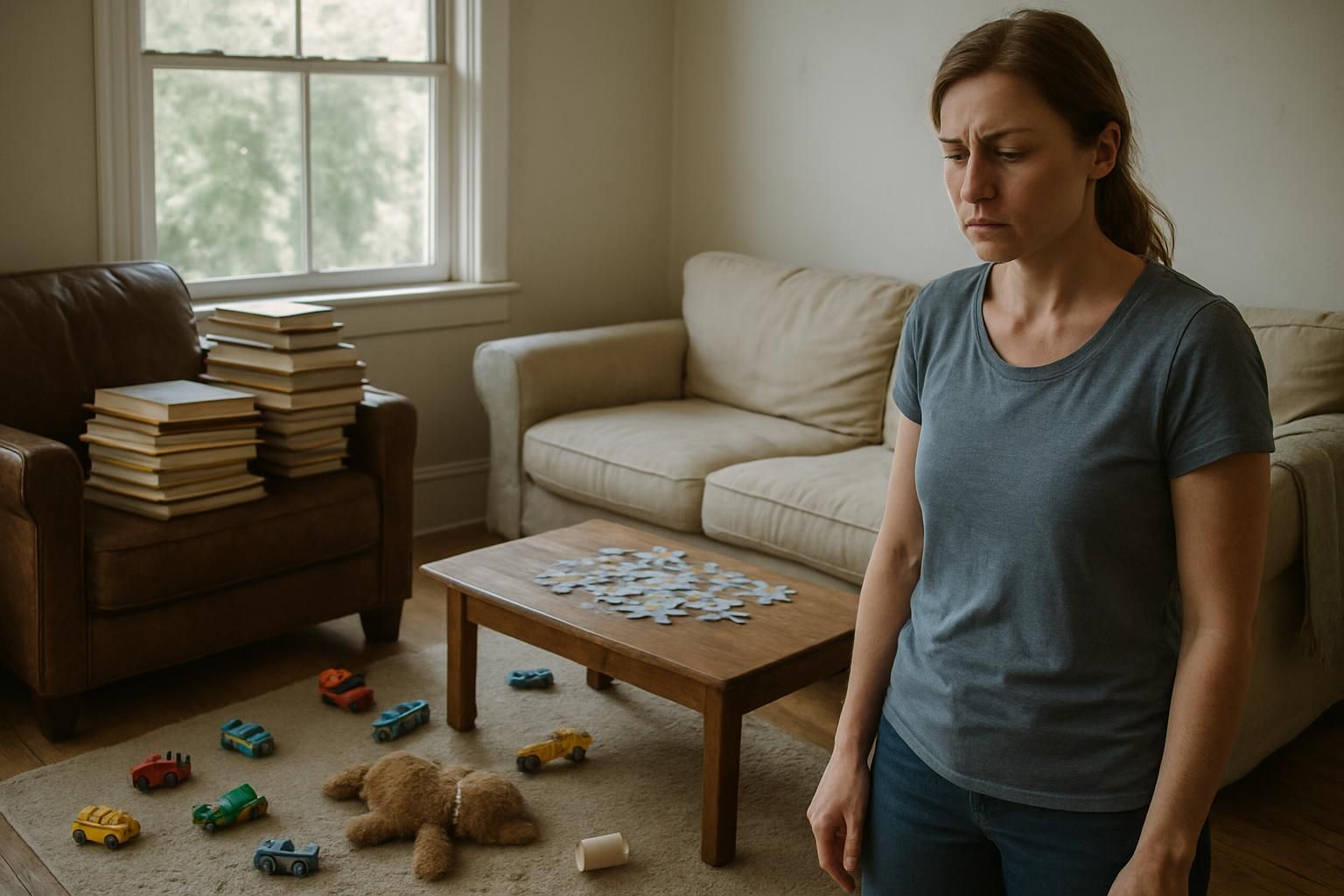
Breaking these bad cleaning habits helps homeowners regain control of their homes. Picking one or two new habits weekly can transform chores into simple routines. Tackling dirt and clutter bit by bit makes the tasks manageable no magic required.
Adopting smarter choices leads to cleaner spaces, fresher air, and happier families. Small changes become lasting benefits for a stress-free home life everyone deserves.
Book cleaning services online, it’s fast and easy. You just have to fill out some information and it’s done. In less than 60 seconds you can book it.
Tip: Begin with one improvement from the checklist provided above. Overcoming bad cleaning habits one step at a time enhances tidiness and overall sanitation.
FAQs
1. Why should I ditch bad cleaning habits?
Bad cleaning habits waste your time and energy, leaving your home less clean than you think. Breaking the cycle helps you tidy up faster and smarter, giving you more free time to relax.
2. What’s one common habit people don’t realize is harmful?
Many folks overload their washing machines thinking it saves effort. But stuffing clothes in tightly prevents proper cleaning and wears out fabrics quicker.
3. How can changing my dusting routine improve air quality at home?
If you’re still using dry cloths or feather dusters, you’re just pushing dirt around instead of removing it. Switching to damp microfiber cloths traps dust effectively and keeps indoor air fresh.
4. Is there a right way to use disinfectant sprays for better results?
Absolutely! Spraying surfaces quickly then wiping immediately doesn’t kill germs properly it’s like rinsing soap off before scrubbing hands clean. Let disinfectants sit on surfaces for several minutes first so they can fully do their job against bacteria and viruses.


